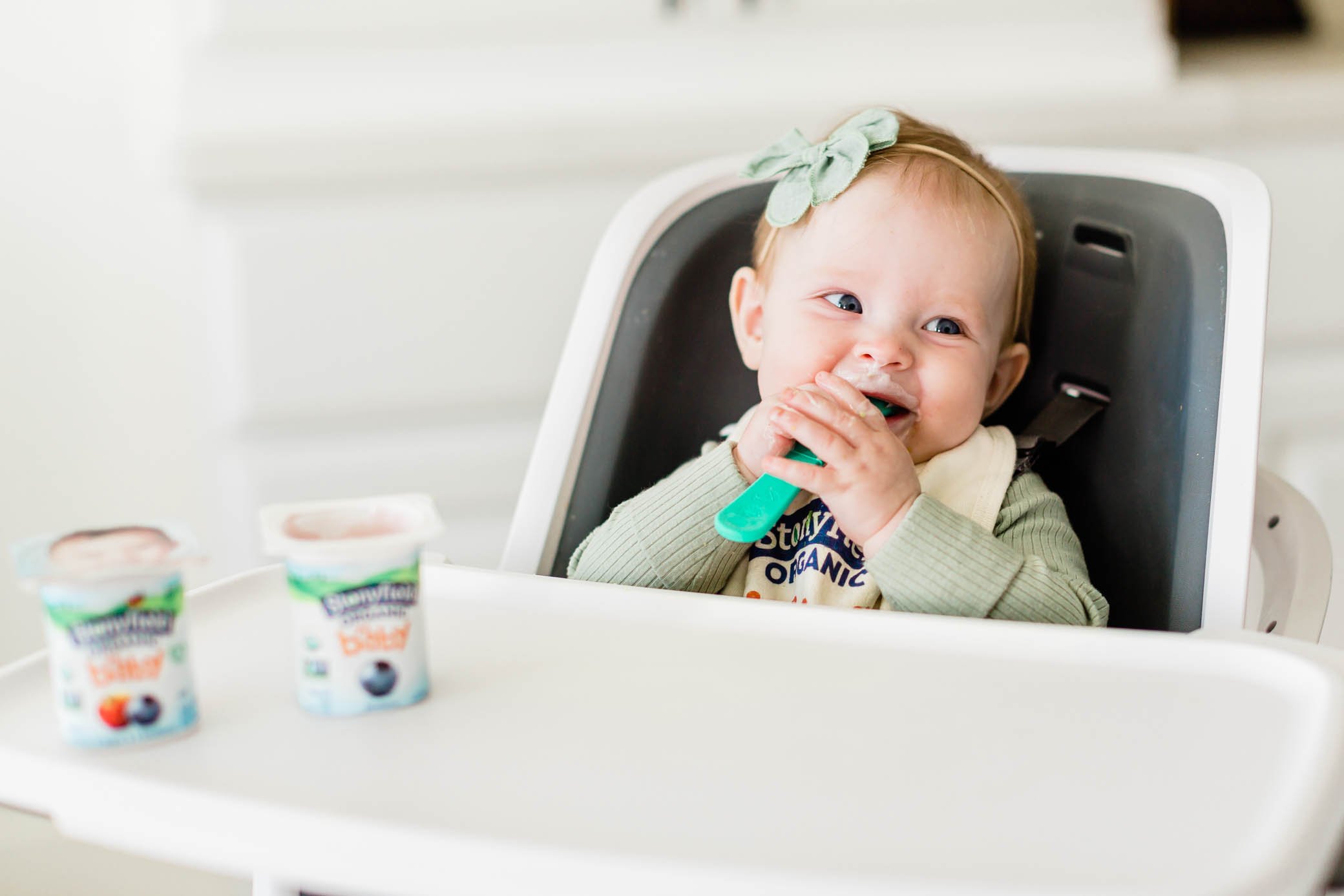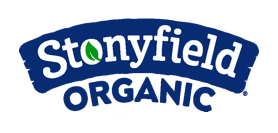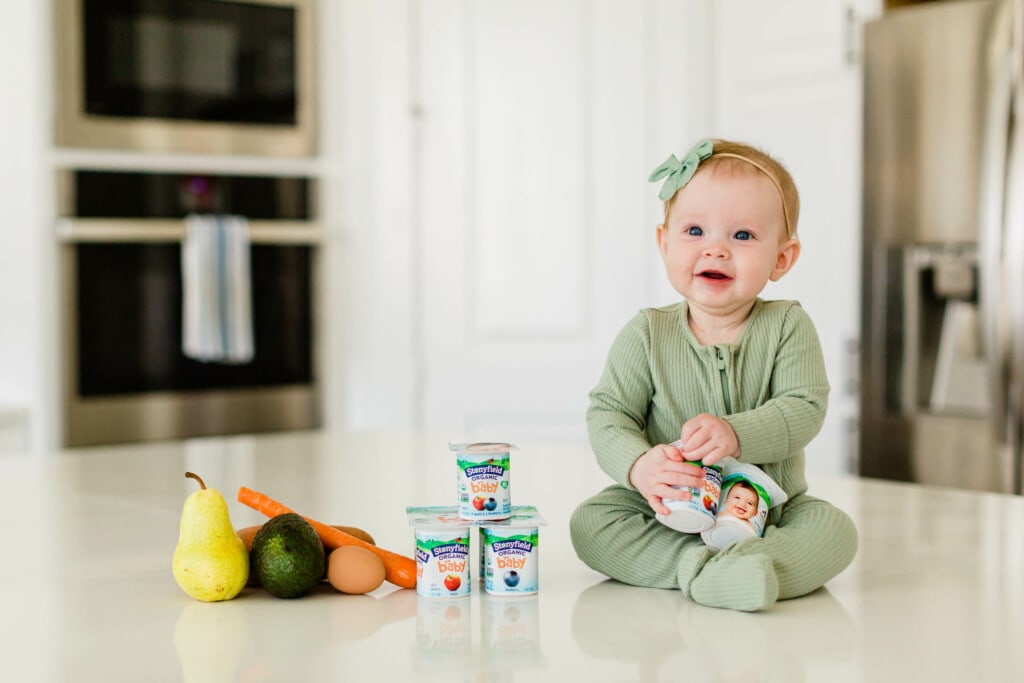Starting solids with your baby is one of the most exciting milestones a parent can experience. You get to soak in these first-time reactions as they explore a new realm of colors, flavors, and textures—plus, you can snap sweet photos along the way.
Before diving right in (and letting the mess ensue), it’s important to know when, where, and how to begin. Do you start with oatmeal, vegetables, or fruit? Can you add salt and sugar to flavor up bland veggies? Is six months the right age to start? We created a short guide of dos and don’ts of starting solids with baby with everything you need to know to get started safely and efficiently.
When to Make the Transition to Solids
While you may be eager to reach your baby’s first feeding milestone, be sure your little one is at the appropriate age to do so. Both the Dietary Guidelines for Americans and the American Academy of Pediatrics (AAP) recommend exclusive breastfeeding or bottle-feeding for infants during the first six months of life so they can receive proper nutrition and health benefits.1,2 Feeding your baby solids before this timeframe can also lead to health risks, such as obesity.
Once they reach the sweet spot of six months old, the solid food fun can begin. If you’re still uncertain whether or not your baby is ready, you can contact your pediatrician or look for key physical indicators. Some of the signs include:
- Your baby can sit in an upright position and can control their neck or head.
- You notice there is a sense of curiosity in your little one anytime you are eating or they are reaching for your meal.
- Your baby opens their mouth if you place a spoonful in front of them.
- When food is offered, your little one swallows it rather than automatically pushing it back out of their mouth—this means a loss of their tongue-thrust reflex, which is good news.
The Dos of Starting Your Baby on Solids
1. Stick to a three-day rule
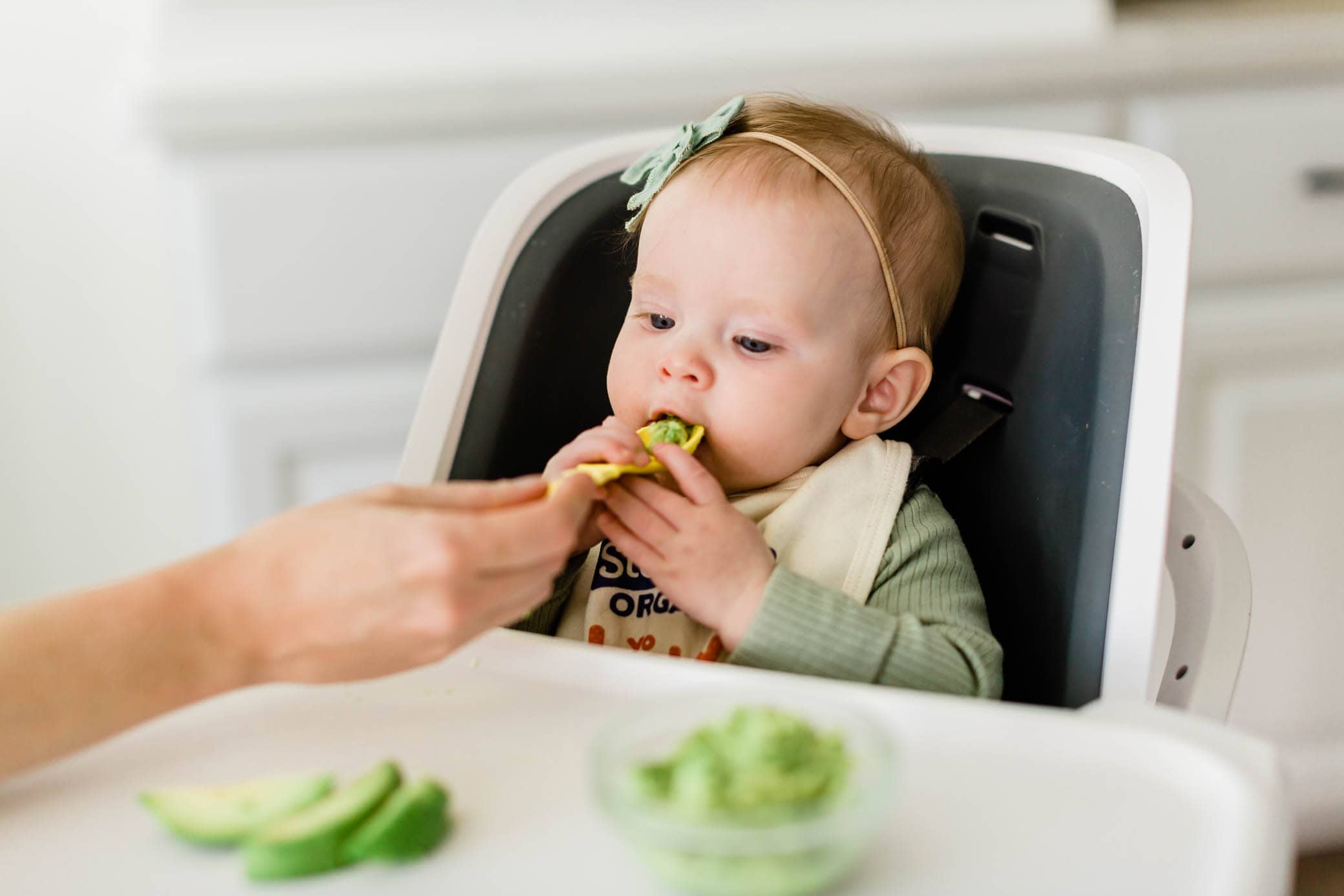
It’s a good rule of thumb to feed your baby the same food for three consecutive days before introducing another solid food option. This helps you keep an eye on adverse reactions to the food—like vomiting, diarrhea, or a rash—and gives your infant’s digestive system time to adjust to processing solid foods.
Remember, it’s okay to take your time with introducing new foods. Start with one-ingredient options and a small amount at a time. Then work your way up as your baby becomes more comfortable with eating solids.
2. Allow for playtime with food

Gone are the days of correcting little ones to stop playing with their food. Experts advise parents not to stress the mess and instead let their babies smear, smush, and poke their meal. This not only piques their curiosity but also aids their sensory development.
The more they can explore their foods, the more easily they can identify the names associated with what they’re eating.
3. Continue to breastfeed or formula-feed
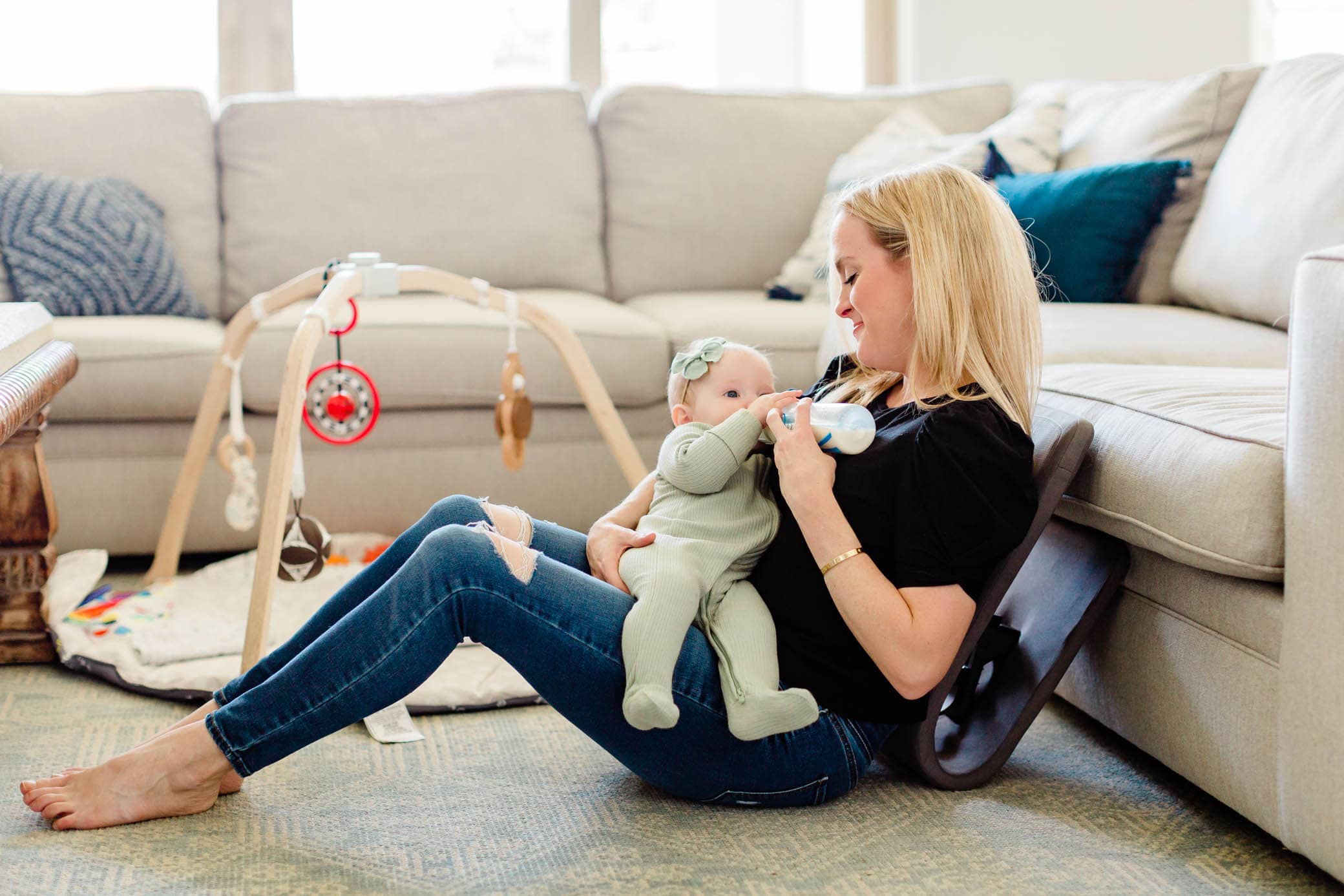
The AAP suggests parents continue breastfeeding or bottle-feeding until their baby turns one year old, as they are an optimal source for calories and nutrition. After their first birthday, you can begin to cut back on breastmilk or formula and replace it with regular cow’s milk or soy milk. At this time, their digestive systems can handle processing it.
4. Introduce allergenic foods
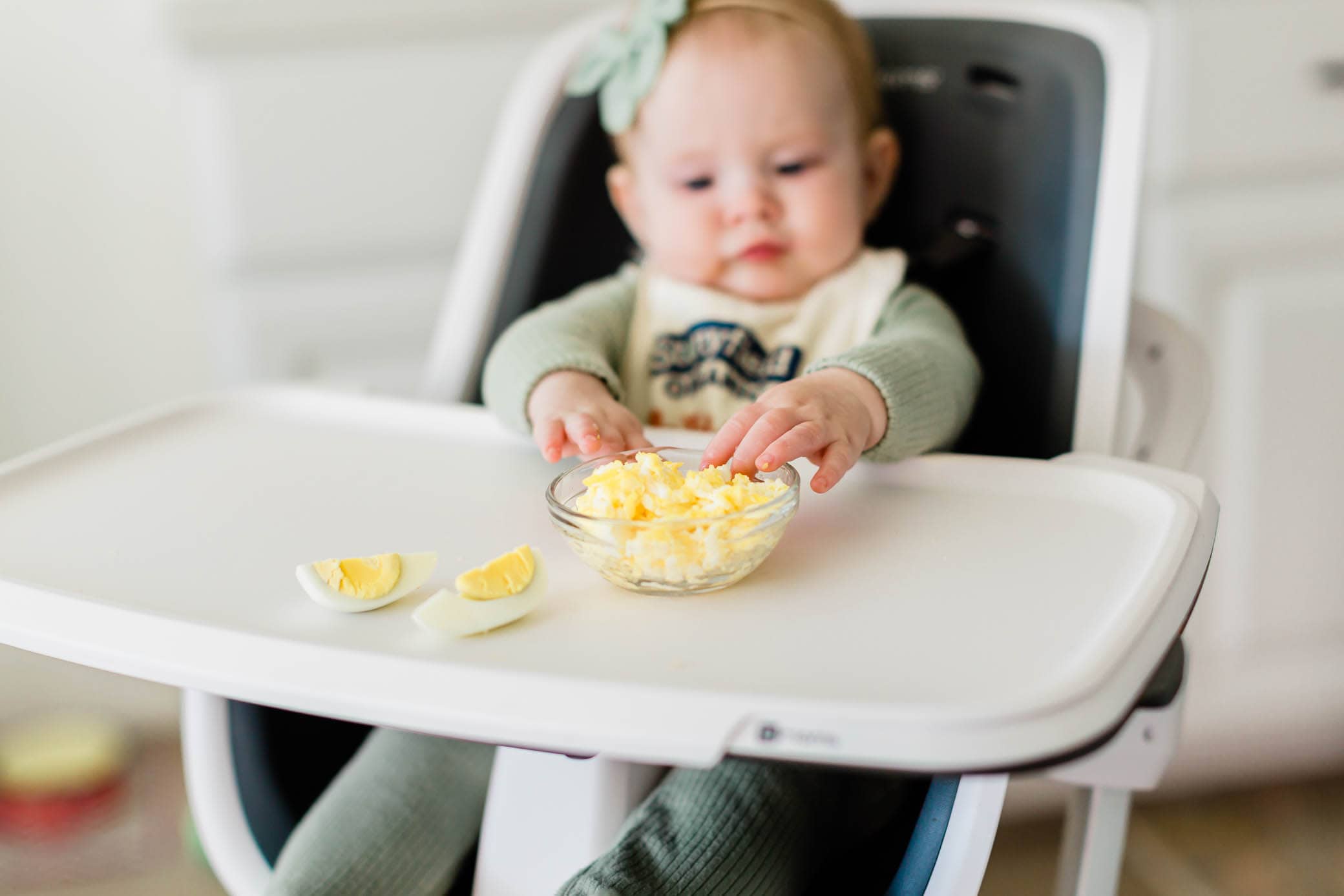
This past March, the European Academy of Allergy and Clinical Immunology (EAACI) released new guidance surrounding the introduction of allergenic foods.3 In the guidelines, the EAACI’s Task Force stated, “the most effective age to introduce egg and peanut is from four to six months of life.” However, they did advise against introducing soy protein formula within the first six months of life to prevent food allergy.
Start by feeding your baby one allergenic food at a time, such as eggs, peanuts, seafood, sesame, soy, tree nuts, or wheat, to watch for any potential allergic reactions.
The Don’ts of Solid Food Eating
1. Refrain from adding seasoning
As adults, adding spice and flavor to our meals is what makes eating so enjoyable. Although you may be tempted to do the same for your baby, it’s best to avoid adding any salt, pepper, or sugar into their food.
Also, refrain from adding honey to any meals until the age of one due to the risk of any food-borne illnesses. Babies can potentially contract botulism, a rare but serious condition, from eating Clostridium botulinum spores found in honey.4 These spores become bacteria that can produce harmful toxins within a baby’s intestines.
2. Skip rice cereal altogether
Veteran parents may swear by feeding rice cereal in a bottle as a quick fix to introducing your baby to solid foods. Some may even recommend it as a hack for getting your infant to stay asleep throughout the entire night. Unfortunately, these are not true and it is not safe for your baby. Not only is it a choking hazard, but it won’t provide the results you’re looking for during this milestone—or when they’re going to bed.
Also, rice cereal is not the best or safest option for your baby. High levels of inorganic arsenic have been found in baby rice cereal. Additionally, it has fewer overall nutrients than other foods you can introduce. With so many other better options like yogurt, vegetables, fruits, and meats, it’s best to skip rice cereal altogether.
3. Don’t force your baby to eat
If your baby isn’t showing interest in the food you’re offering or rejects it during their feeding, don’t force it. It’s okay to stop the feeding and try again the next day. And when you do, make sure the solid food you introduce is fresh. This will help you learn if your baby truly doesn’t like the food.
Patience is always key during this process, and be sure not to compare your little one to other babies, as each child is different. If you’re concerned that your baby is rejecting all the foods you’re introducing, it’s best to contact your pediatrician.
4. Don’t walk away during feeding time
While you may be confident in your baby’s self-feeding capabilities or feel comfortable in allowing them to explore their food, it’s imperative to constantly watch them and never walk away. Your baby should be seated upright, which allows for swallowing foods more easily and a less likely chance of choking.
The Best Solid Foods to Start With
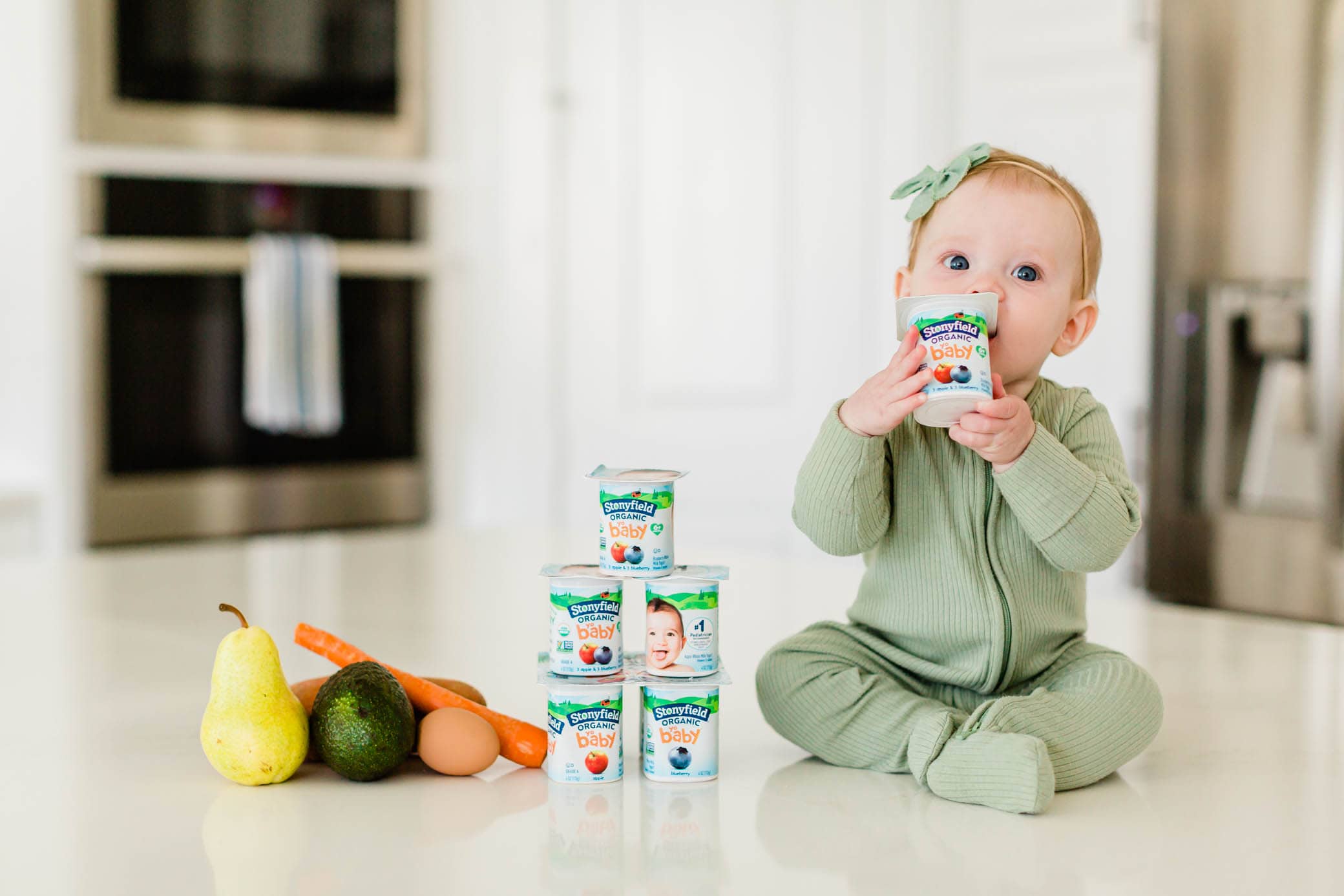
Once your baby is ready to kickstart their solid food journey, begin offering softer foods packed with vitamins, nutrients, and protein. If your budget allows it, I recommend purchasing organic food options. Seven great options to start with are avocados, bananas, carrots, eggs, pears, sweet potatoes, and Stonyfield yogurt.
Is yogurt safe to give my baby?
I mentioned earlier that babies shouldn’t be given cow’s milk to drink until they are 12 months of age. However, yogurt can be introduced as soon as your baby is ready to start solids! The reason for this is yogurt is made by fermentation. This process allows its proteins to be easily digested by tiny tummies.
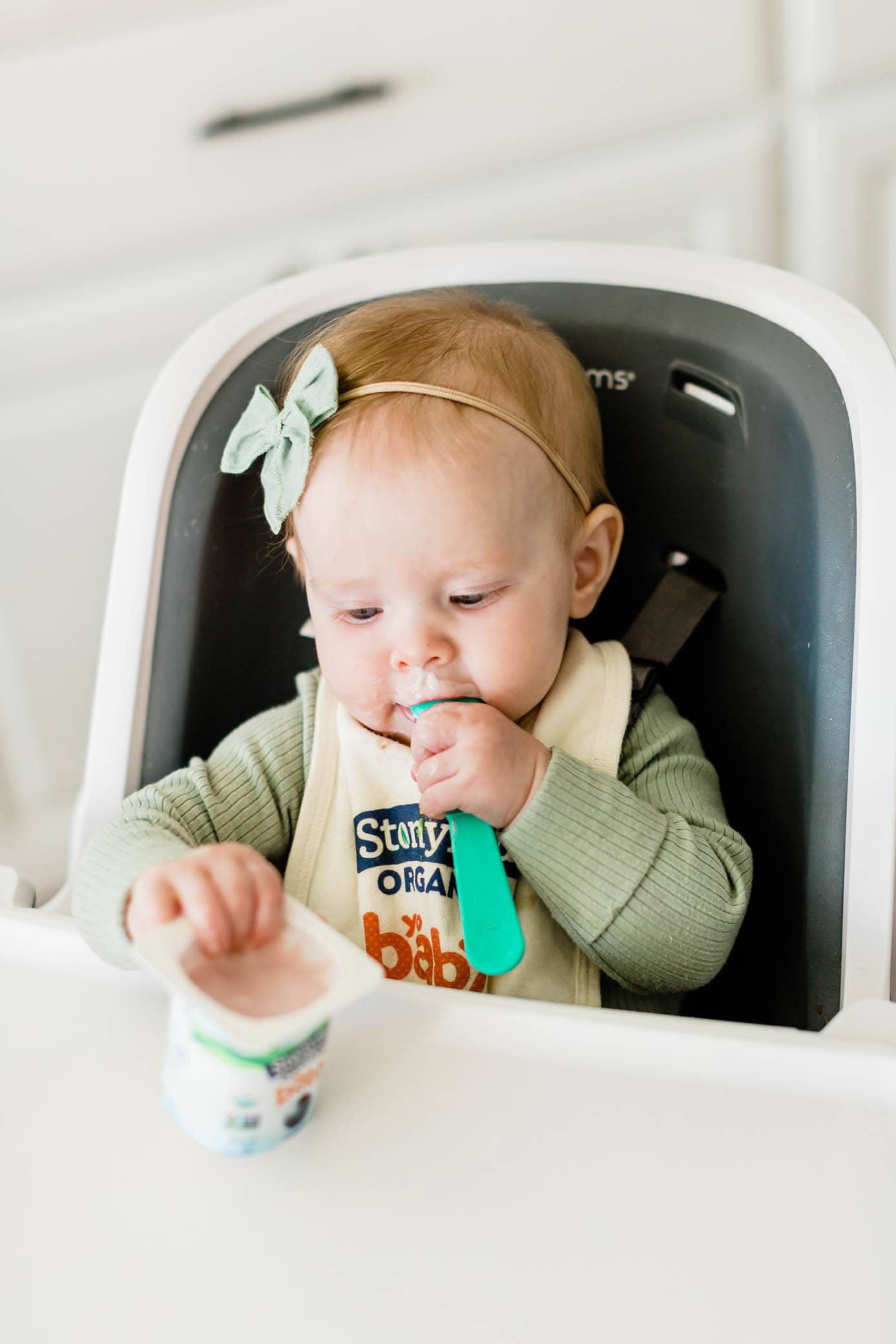
I recommend Stonyfield Organics Yobaby yogurts for many reasons. Firstly, because they are whole milk yogurts and our babies need full-fat yogurt. Yogurt also contains essential vitamins and nutrients our babies need. It contains protein (which supports metabolism), calcium (good for healthy teeth and bones), and potassium (good for regulating blood pressure, metabolism, and bone health).5,6,7,8
Stonyfield Organic YoBaby yogurt cups also contain probiotics, which can be incredibly beneficial for babies. YoBaby yogurt cups nourish your baby with probiotic BB-12®, which has been shown to have a digestive health benefit when consumed regularly as part of a balanced diet and healthy lifestyle. (BB-12® is a registered trademark of Chr. Hansen.)
How Do I Introduce These Foods to My Baby?
Boiling is the safest method to prepare fruits, veggies, and eggs. Then puree or steam and blend them until they’re soft and mushy. This ensures your baby can swallow the food without choking while also allowing them to adjust to trying new flavors. And with yogurt, there is no preparation involved! Just open the container and introduce it to your baby.
Around six to nine months of age, your baby is developing their chewing and motor skills. You can begin offering small chunks of food as well as baby-led weaning methods to allow your little one to practice self-feeding.
Avocados
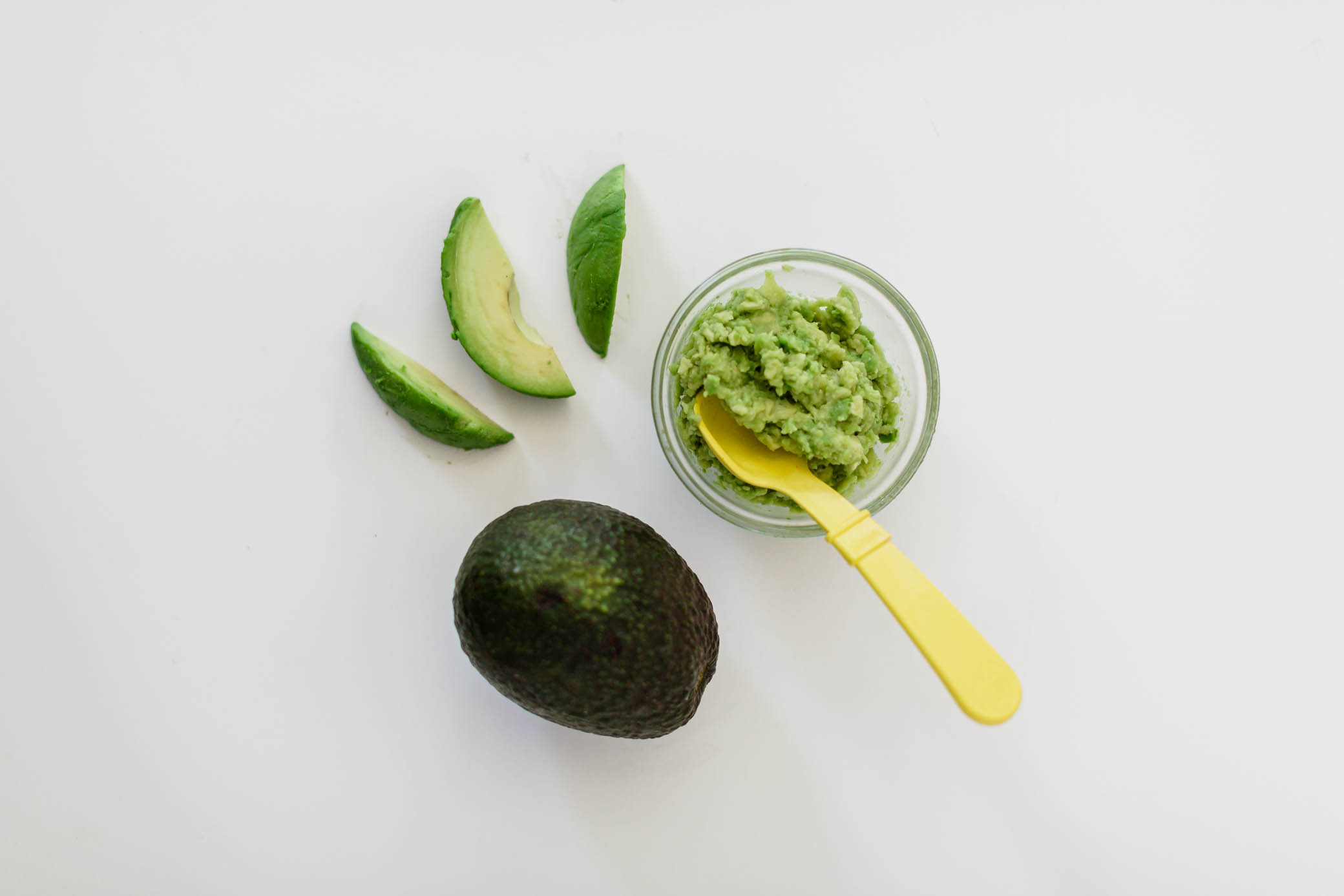
A colorful and tasty option is an avocado. They are high in potassium, fiber, and healthy fats that are good for your little one’s digestion and brain development.
You can either mash them in a bowl and spoon-feed your baby or cut in long, thick spears for baby to grasp.
Bananas
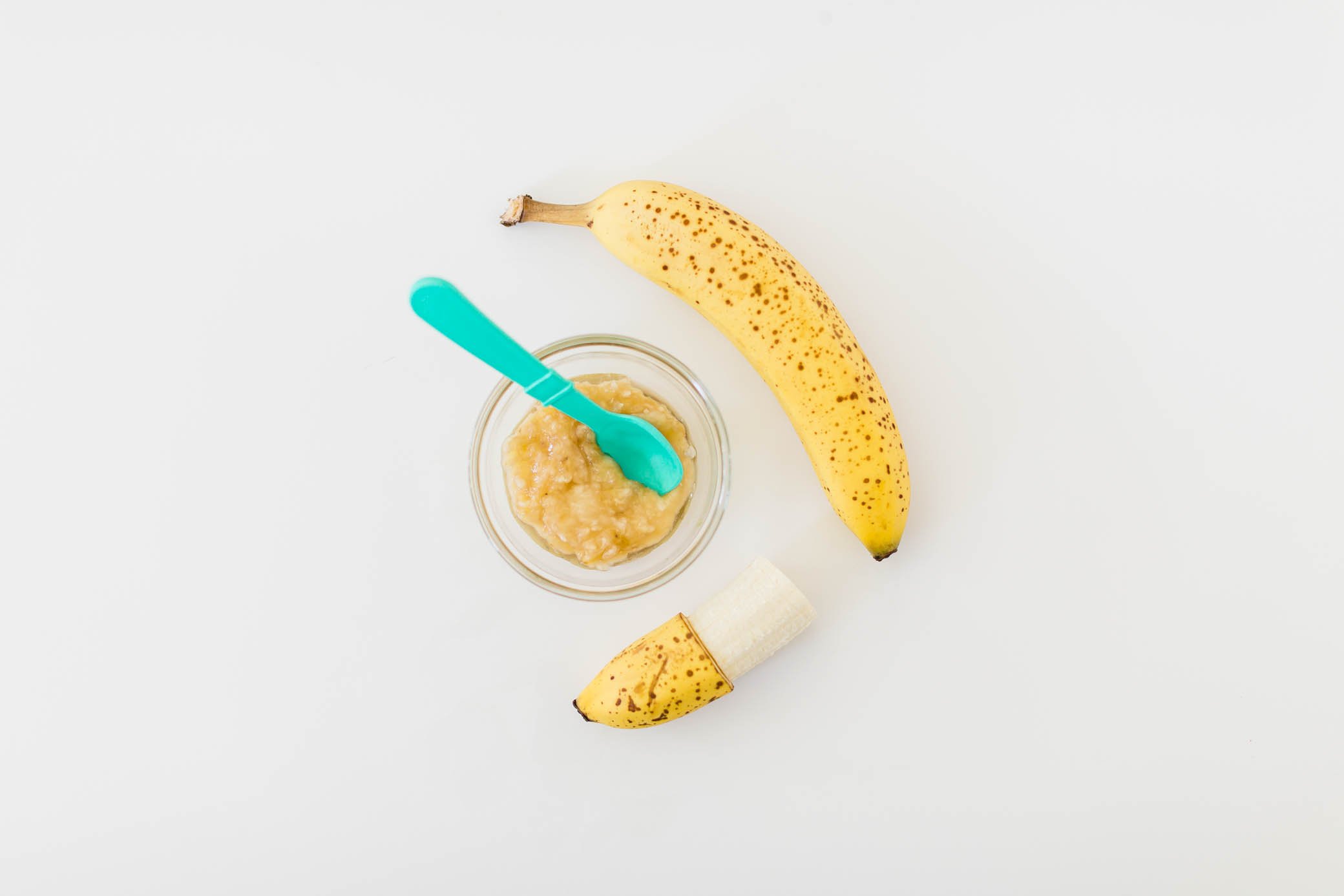
Bananas are potassium-rich fruit full of carbohydrates that’ll energize your baby’s little body. It also contains vitamins A, B6, and B12, fiber, folate, calcium, magnesium, and zinc, which help infants gain healthy weight.
One way to give bananas to your baby is to mash the bananas in a small bowl and spoon-feed your little one. Another option is to cut the banana in half and offer half of a whole, peeled banana on its own. You can also cut half of the banana in long spears. And my favorite way, so it’s easier for baby to hold on to, is to leave some of the peel at the bottom for your baby to hold. As they eat some of the banana and get closer to the peel, remove the peel.
Carrots
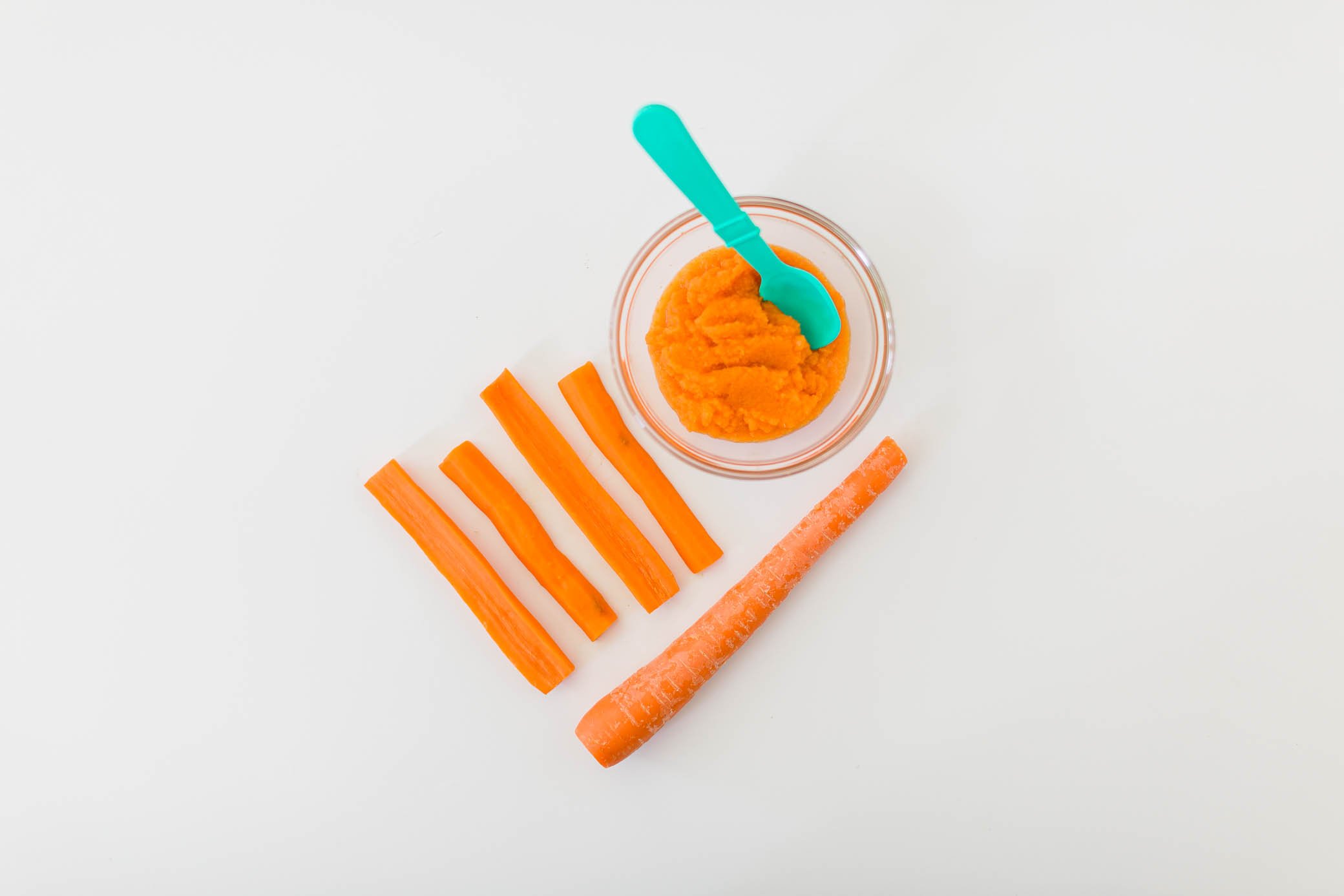
Your parents weren’t lying when they said eating carrots was good for your eyes. Carrots are jam-packed with Vitamin A, which supports a healthy immune system, eyes, and skin. Plus: it has Vitamin K that helps with blood clotting.
To prepare it for your baby, you can steam and blend the carrots to create a puree. Another option is to cook whole peeled carrots. They must be completely soft and can easily be pierced with a fork. Then cut the cooked carrots into long spears for baby to hold and chew on.
Eggs
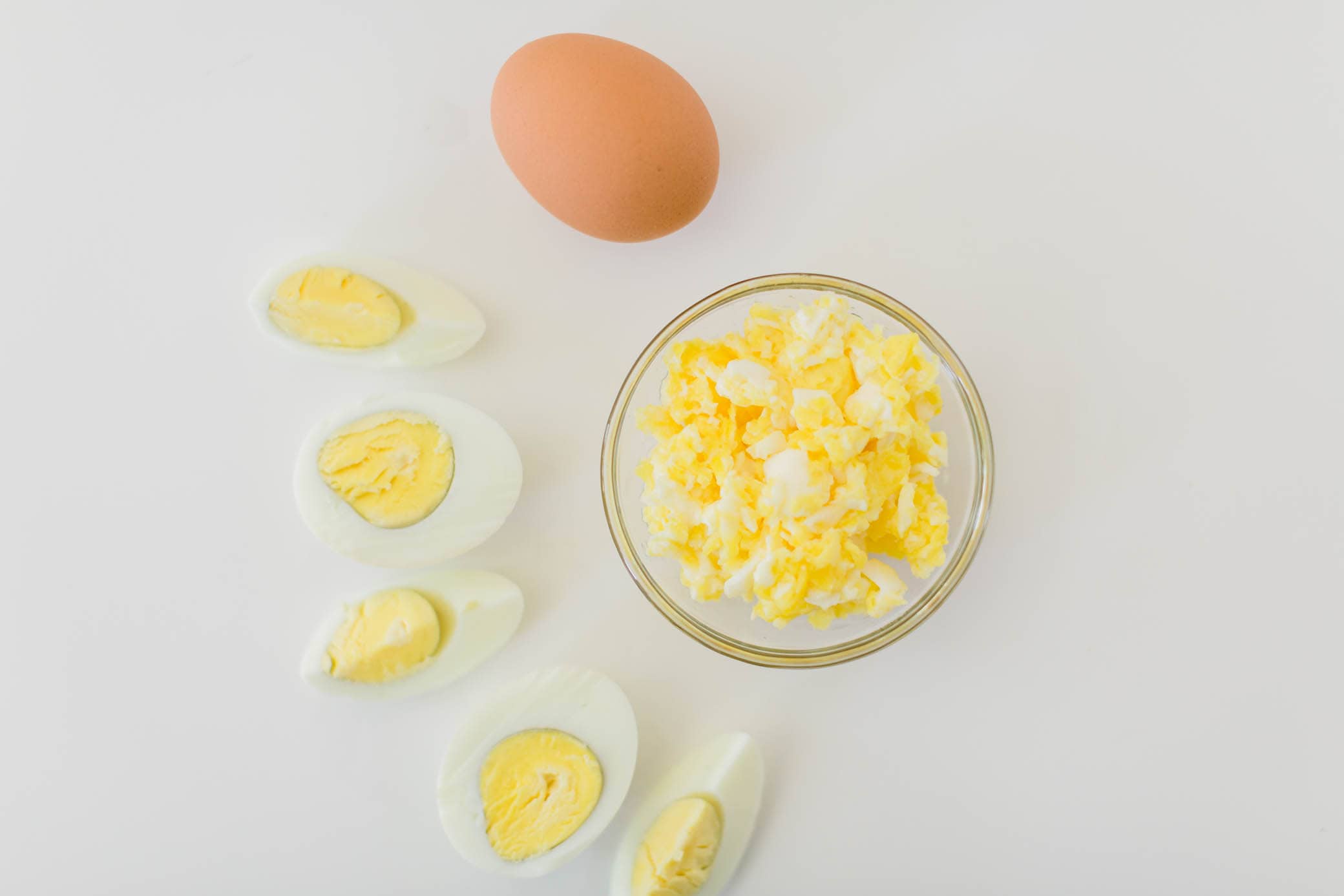
Whether you boil them and puree the yolk and egg white or scramble them up into small pieces, eggs are a convenient and nutritious source of fat and protein. Eggs also provide nutrients like biotin and iron that are essential for a child’s growth and development.
Pears
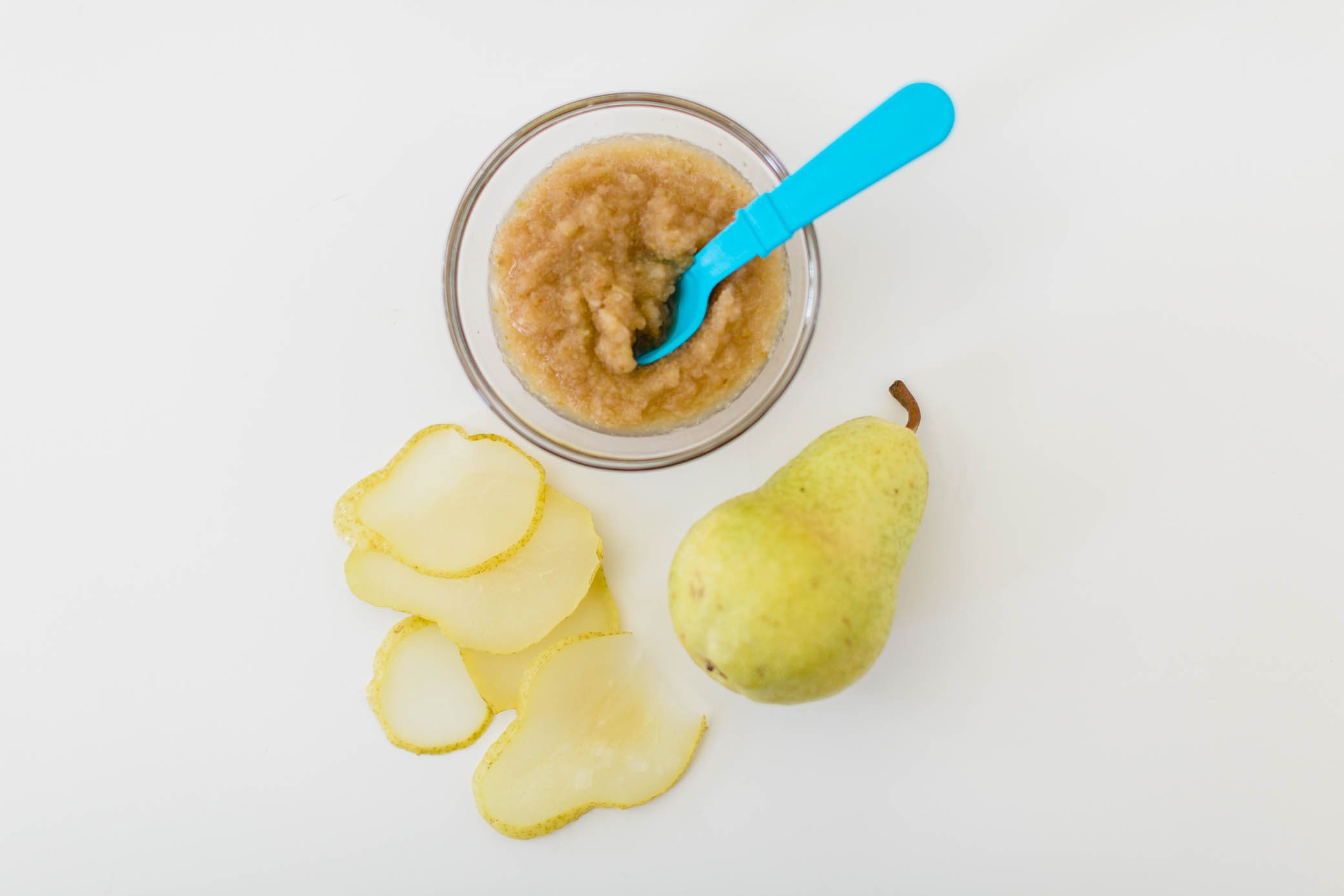
Pears are at the top of the list for first solids to introduce to infants. They not only have a high retention of water, making this a refreshing treat that can fight constipation, but they’re also sweet and soft. The fruit is also rich in Vitamin C and E, folate, fiber, and potassium.
Either steam and blend them for a tasty puree or cook them until soft and slice them thinly to be safe for babies.
Sweet Potatoes
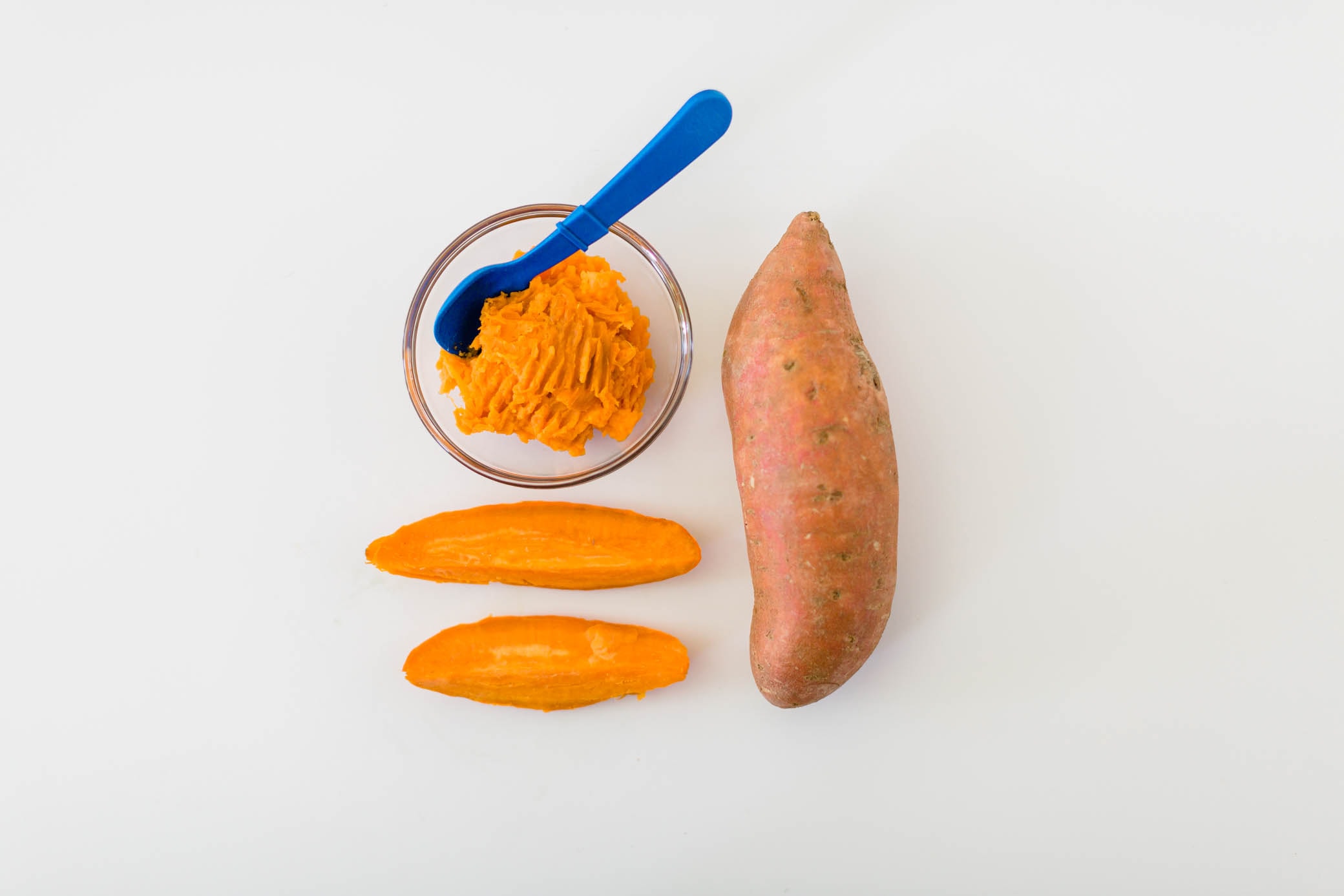
An excellent naturally sweet ingredient, sweet potatoes pack in calcium, folate, vitamin E, and high potassium levels. They also contain a high amount of beta-carotene, the red-orange pigment found in colorful fruits and vegetables like carrots, that the human body converts into Vitamin A.
To prepare the sweet potato for your baby, cook it until it is soft and can be pierced with a fork. You can peel it if you’d like and then cut it into spears. You can always lightly mash it or puree it if that makes you more comfortable. Another fun thing you can do is “season” the sweet potato with yogurt to add extra nutrition!
Stonyfield Yogurt
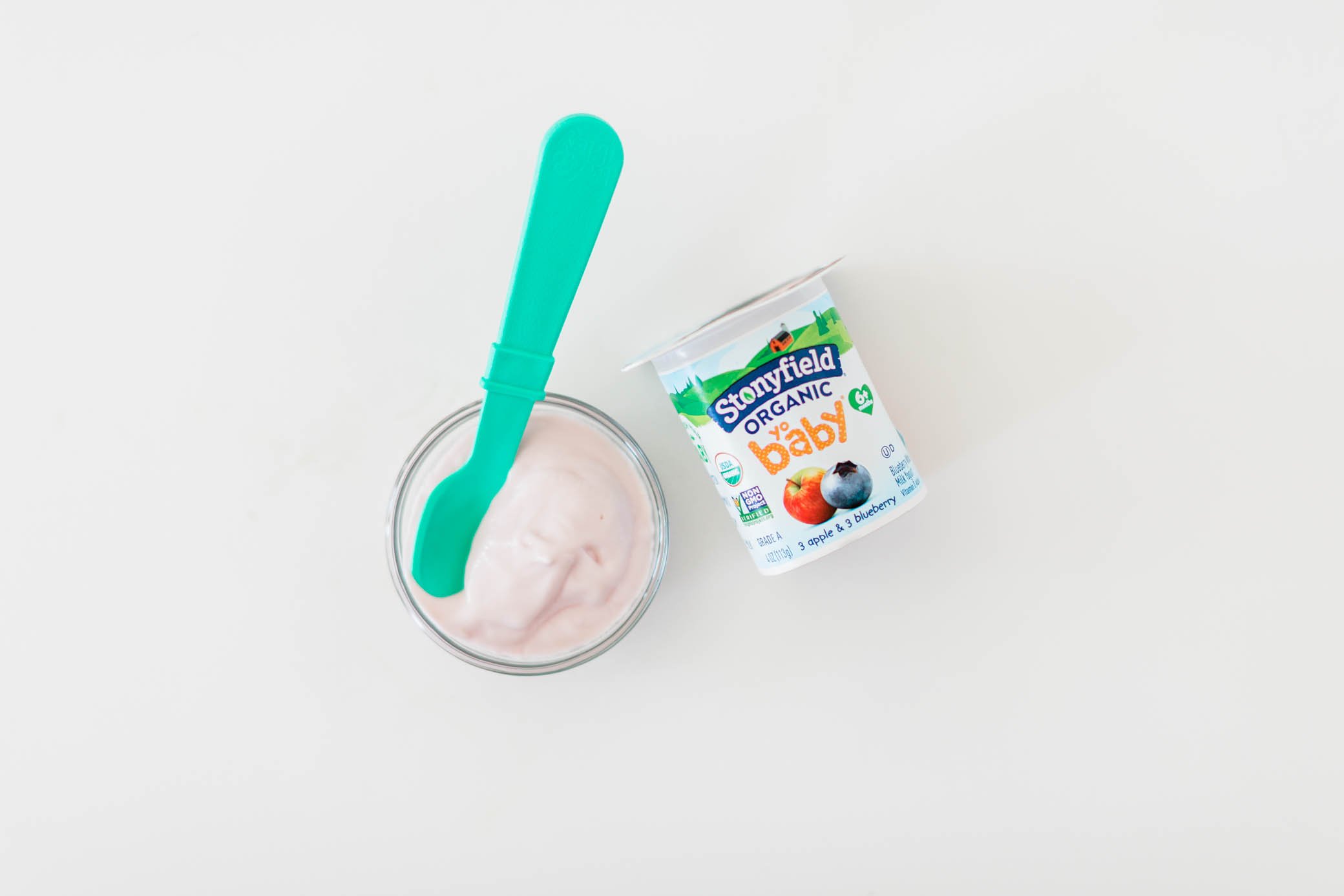
Speaking of yogurt, Stonyfield Organics Yobaby yogurt is a quick and easy go-to loved by parents. This nutritious dairy product is made with organic ingredients. Their yogurt is loaded with beneficial probiotics that support a healthy gut, from the whole milk to the other included ingredients. It’s also high in protein and calcium, ensuring your baby’s bones and teeth remain strong.
Stonyfield Yobaby yogurt has been a favorite for both of my kids! And, another bonus for me, it requires no need for preparation.
Off the Menu: Foods to Not Introduce
If you’re uncertain of other foods to feed your hungry little monster, remember that soft, liquified food is the name of the game. Avoid giving them hard, chunky, lumpy, or thick foods that they can potentially choke on, such as:
- Any form of candy, especially small, circular ones
- Chunks of meat, poultry, or cheese, such as hot dogs—slice into appropriate, bite-size pieces
- Nuts and seeds
- Popcorn and whole-kernel corn
- Raw fruits and vegetables, like celery
- Whole cherry tomatoes and grapes—they must be cut up into quarters
- Sticky foods that can get stuck in the back of their mouth, such as peanut butter
With all of these tips, tricks, and dos and don’ts, starting solids with your baby should be more enjoyable and fun for you and your baby!
